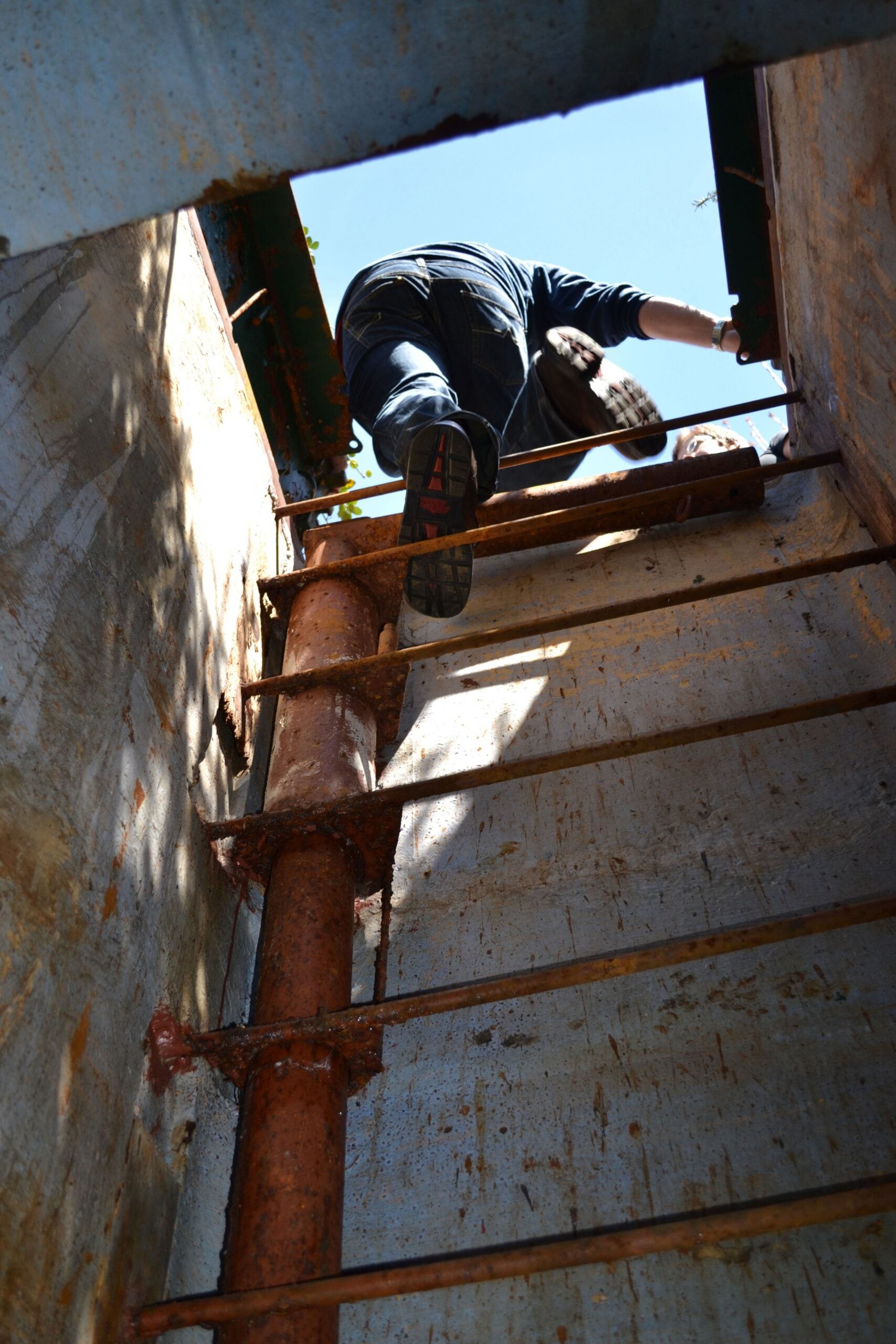The contents of an almost perfectly preserved nuclear fallout shelter are on display at a museum in Neenah.
The exhibit was donated by a local family that found the supplies in their backyard fallout shelter. It evokes Cold War-era fears of nuclear annihilation.
It’s a house with curb appeal on a leafy street in Neenah. Not exactly the type of place one would think to find a bunker in the backyard.
Stay informed on the latest news
Sign up for WPR’s email newsletter.
Carol Hollar Zwick lifts the rusty bulkhead doors of the fallout shelter. It was installed by the previous owner of the house she and her husband, Ken Zwick, bought back in 1999.
Peering down into the dark, 11-foot deep hole, all you can see is about five inches of water, accessible by a rusty ladder attached to the wall. “At this point a lot of people who thought they wanted to go down decide not to.”
When they bought the house, the Zwicks knew there was a fallout shelter in the backyard but they waited ten years to open it. “The question is: ‘Why did it take so long for us to open it?’”
For starters, Carol Hollar Zwick says the above ground doors are a rusty eyesore-now turned conversation piece. Also at the time they had little kids. And who wants little kids around an 11-foot pit?
On this day a couple of historians and a photographer prepared to climb down into the hole.
Once down, pretty much all that’s left in the shelter are some rusty bunk beds and a large metal door.
Stephen Kercher, one of the members of the expedition, is a history professor at the University of Wisconsin-Oshkosh and curator of an exhibit at the Neenah Historical Society called “Take Cover Neenah!”
When the Zwicks finally opened the shelter in 2010 they found airtight metal army surplus boxes floating in five feet of water.
The previous homeowner stocked the fallout shelter with all kinds of medicines, clothes, plus food and water (and Hawaiian Punch) to last at least two weeks. That’s the time the government advised citizens to take cover, during which time the nuclear fallout would supposedly dissipate.
It’s all now on display at the Historical Society’s museum at the Octagon House. Curator Kercher helped create a replica of the shelter. “It’s essentially the fallout shelter. I mean look at all these supplies perfectly preserved. It’s just amazing.”
The preserved supplies are like a time capsule from 1960, when the shelter was built. “These army cases: perfectly sealed. They had desiccants. You can see the Butternut Coffee cans. These were the desiccants. This was a scientific man who probably knew a thing or two about what it would take.”
Kercher says nuclear war was a real threat, especially by the late 1950s and early 1960s.
He says shelters like the one in Neenah were expensive and only about 1 percent of the American population could afford one. That led to apprehension in neighborhoods. Homeowners couldn’t exactly hide the fact they were digging giant holes in their backyards. “If Armageddon came and you were the guy with the fallout shelter in your backyard, what’s going to happen to everyone else?”
There aren’t any answers at “Take Cover Neenah,” but the exhibit aims to give younger generations an insight to the ominous clouds people lived under 50 years ago.
Wisconsin Public Radio, © Copyright 2025, Board of Regents of the University of Wisconsin System and Wisconsin Educational Communications Board.
